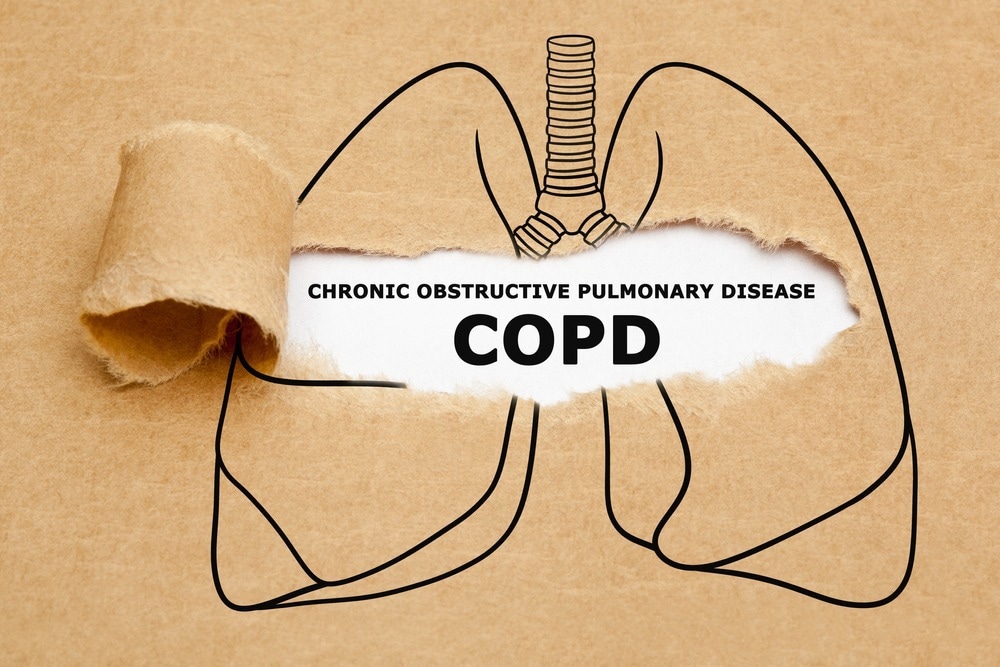Continuing our coverage of SLAS 2023, we speak to Ceri Wiggins, the Director of Functional Genomics at AstraZeneca, about the many applications of CRISPR and its role in discovering new COPD therapies.
Please can you introduce yourself and tell us what inspired your career in science?
My name is Ceri Wiggins, and I lead a group in Functional Genomics at AstraZeneca based in Cambridge, UK. My initial inspiration for a career in science probably goes all the way back to an eccentric secondary school science teacher whose slightly controversial lessons captivated my interest in science as a subject.
Career-wise, I think it was about coupling a subject I found interesting with a desire to keep learning – something science is particularly good for – and to feel that the work I do could have a positive impact on people.
You are currently the Director of Functional Genomics at AstraZeneca, a world-leading pharmaceutical company ‘transforming the future of healthcare by unlocking the power of what science can do.’ Can you tell us more about your role, including your day-to-day responsibilities and any projects that you are currently working on?
I lead the Phenotypic Screening group – we combine a high-throughput arrayed platform with disease-relevant models and perturbation agents, such as CRISPR, to identify and validate new targets. Projects can come into the team from all therapy areas within AstraZeneca, and part of my role is to meet with our many stakeholders, help crystalize their target discovery ideas and manage our portfolio.
The group has grown significantly in the past year, and the operational leadership of the 20+ scientists and students in the team accounts for a significant proportion of my time. As part of the Functional Genomics leadership team, my colleagues and I are responsible for setting a clear scientific strategy for the department and ensuring we can deliver it. My role is incredibly diverse, the pace is fast, and no two days are alike – which is probably why I enjoy it so much.

Image Credit: ImageFlow/Shutterstock.com
You are giving a talk at SLAS 2023 titled ‘A suite of arrayed CRISPR assays in primary respiratory cells for the identification and validation of new targets for COPD’. Please can you tell us more about what you will be discussing in this talk and what readers can expect to learn?
AstraZeneca has invested significantly in building its arrayed CRISPR capabilities, and my SLAS presentation will show a great example of the type of rich data you can get when you have key capabilities in place. A unique challenge we have in my group is how to marry together a workflow with competing challenges. To take an unbiased approach means scale; for instance, we are using 64x384-well plates per treatment arm in the case of a whole genome screen which requires having automated parts of the process to make them feasible.
Neither scale nor automation are trivial when working with primary cells, but we also don’t want to compromise on our choice of model, which means finding solutions to yield robust screening platforms. In my talk, I have tried to speak to the amount of work required to set up the workflow that sits behind the data, but equally, an idea of the return on investment in terms of the additional insights that multi-parametric data can give.
In your COPD research, you utilized CRISPR methods to potentially identify new targets for COPD treatments. Can you tell us more about this research and how it could be potentially used as a treatment option for COPD?
COPD is a chronic inflammatory disease with unmet clinical needs – it is the third leading cause of death worldwide. The damage caused to the lungs during COPD is permanent, and most treatments aim to slow down progression, but for some patients, the condition still progresses and can end up having a significant impact on their quality of life or lead to life-threatening problems.
Our work looks to build on the understanding that senescence is a cellular process linked to COPD pathology. If we could identify novel regulators of senescence, we may be able to use these as new targets for therapeutics. If successful, these could offer an improved treatment versus existing therapies or be able to be used in combination with other standard-of-care molecules for improved patient outcomes.

Image Credit: metamorworks/Shutterstock.com
What further steps need to be taken before this treatment could become a reality? If successful, what would this mean for both healthcare settings and patients themselves?
After a review of R&D strategy over a decade ago, AstraZeneca created its 5R framework: Right target, Right tissue, Right safety, Right patient, and Right commercial, and these essentially guide the development of any new medicine. The primary reason drugs fail is lack of efficacy, and selecting the right target is the most important decision we make in the drug discovery process. By running our target identification screens in disease-relevant models, as we have done with our work in COPD, we are starting with a strong link between the target and the disease.
We aim to build a target validation package around strong hits and work with our therapy area colleagues to validate findings in multiple donors or even patient material. The governance structure surrounding new targets always includes an assessment of the target safety profile and the commercial environment, and the hope would be that targets discovered by our screens would enter the Respiratory & Immunology portfolio.
CRISPR is a tool that has seen incredible attention in recent years, with its application portfolio expanding rapidly. How can CRISPR benefit so many scientific sectors, and are there any other sectors that you feel it could particularly benefit?
CRISPR has been described as ‘game-changing’ and for a good reason. CRISPR has revolutionized the drug discovery process, and some of this stems from its compatibility with other emerging technologies, such as artificial intelligence, omics, next-generation sequencing, etc. There are also not many other technologies where application spans the entire drug discovery paradigm – from an ‘off the shelf’ reagent to being used to identify and validate targets to its deployment in the therapeutics space through CRISPR-based cell and gene therapies.
We are currently working to extend our efforts to identify new targets for the non-coding genome. While CRISPR screens have been widely adopted to analyze the function of coding genes, applying the technology to non-coding elements is technically more challenging; however, progress is being made. Given the huge impact we have seen from CRISPR being used to interrogate just the 1.5% of the coding genome, I think we can expect some exciting discoveries as we start to explore the remaining 98.5% of the genome that is non-coding.

Image Credit: Design_Cells/Shutterstock.com
Scientific breakthroughs and technological advancements in the life sciences are largely due to the strong collaboration and partnerships seen in the sector. How important is collaboration to your research at AstraZeneca?
Collaboration underpins everything we do at AstraZeneca. Whether it’s between members within my team, with our therapy area colleagues across the globe, or external collaborations with academics and industry partners, we deliver through teamwork. Every project within my group is part of larger matrix teams that bring people together from different parts of the business to share their knowledge and ideas. In functional genomics, this is especially true by the nature of the work we do; for example, the deep disease knowledge sits within a therapy area, but the assay development and screening knowledge comes from our team.
We have a number of external collaborations at the moment, and they are a great way for us to engage with novel science beyond our portfolio and evaluate technologies for the first time. We also work closely with the Open Innovation Program, AstraZeneca’s collaboration portal designed to facilitate such interactions.
How important are scientific conferences such as SLAS in fostering new partnerships and challenging new research ideas?
For me, conferences are a brilliant way for scientists to connect and expand their knowledge and network. As a scientific community, we felt this loss during the COVID pandemic, and while virtual events helped bridge the gap, they also highlighted the importance of face-to-face events. Personally, I find conferences a welcome opportunity to immerse myself in new science and reflect; and I always come back energized and full of ideas.
The value of the connections you make at conferences can’t be underestimated. I recently attended a local meeting, and through a completely serendipitous interaction, I came back with a solution to a problem that had grounded an important project in my team.
February 11th is the International Day of Women and Girls in Science, raising awareness for all women and girls working in the scientific sector. What makes you particularly proud to be a woman in science, and what advice would you give to young girls looking to enter the scientific community?
You have touched on something very close to my heart with this question. Unfortunately, I am of the generation where I experienced gender bias regarding my choice of industry, and I remember vividly being told by various career advisers that science and medicine were not very ‘family friendly’ career choices. Thankfully, society has come a long way, but this was only 25 years ago, meaning we are still feeling the impact of this bias, and the result is a shortage of female role models in senior positions to inspire the next cadre of women. The themes of inclusion and the value of diversity underpin many initiatives at AstraZeneca, and I am very proud to be part of a team whose mission is to ensure our female talent reaches its full potential.
My advice to young girls and women in the early stages of their careers would be to find a mentor or someone who inspires you and who can offer you support and advice when you need it. When interviewing our senior leaders, a common theme was having access to someone they identified as a ‘coach’. I have been very fortunate to have had these types of relationships, and they helped me navigate the key transitions in my career.

Image Credit: VectorMine/Shutterstock.com
What is next for you and your research at AstraZeneca?
Something I am very excited about at the moment is how we can deploy functional genomic screens in the immunology space. We have seen significant investment in this area, and we have spent the last 12 months developing our capabilities. Immune cells come with a whole host of additional challenges on top of the usual considerations around scale and automation. For example, we need to address how to deal with very rare cell types and how to address donor variability.
The endpoints to these screens are also complex: multi-cell type functional assays combined with multi-parametric endpoints mean the assay development burden is significant but worth it as the application of this work goes beyond target identification/validation.
Where can readers find more information?
AstraZeneca’s Open Innovation: https://openinnovation.astrazeneca.com/about-us/what-is-open-innovation.html
About Ceri Wiggins
Ceri Wiggins is a Director at AstraZeneca, where she leads the Phenotypic Screening group in Functional Genomics.
Before joining AstraZeneca in 2021, Ceri spent ten years at Horizon Discovery, where she held a number of roles. Her group helped establish Horizon’s core CRISPR capabilities, and she later led the R&D group responsible for developing and commercializing their novel Pinpoint™ base editing platform.